A Homeowner's Guide to San Diego Building Codes
Navigating the intricacies of San Diego building codes can be daunting for any homeowner looking to remodel or add to their property. Understanding these regulations is critical for ensuring that construction projects are completed safely, legally, and to the highest standard. Here’s a streamlined guide to help you make sense of San Diego’s building codes.
Understanding the Basics
Building codes are essentially a set of rules that govern how structures must be constructed or altered. In San Diego, these codes ensure that buildings are safe, healthy, and accessible. They cover everything from structural integrity, electrical systems, plumbing, to fire safety, and energy efficiency.
The Role of San Diego’s Building Codes
San Diego building codes are enforced to protect the public’s health, safety, and welfare as they relate to the construction and occupancy of buildings and structures. They are updated regularly to reflect new standards and technologies.
Starting Your Project Right
Before beginning any construction project, it’s imperative to acquire the necessary permits. This process involves submitting your project plans to the local building department for review. Here, they will be checked for compliance with San Diego building codes.
Key Areas of Focus
Structural Requirements: These ensure that buildings can withstand typical loads and forces, such as those from earthquakes common to Southern California.
Electrical Safety: Electrical codes safeguard against hazards such as shocks and fires. They govern the installation of wires, circuits, and electrical equipment.
Plumbing Standards: Plumbing codes cover the installation and maintenance of water supply and waste disposal systems, ensuring they are safe and hygienic.
Energy Efficiency: San Diego’s climate action plan includes codes that require buildings to meet certain energy efficiency standards, like insulation and window requirements.
Fire Safety: Codes related to fire safety include the installation of smoke detectors, fire-resistant building materials, and proper egress windows.
Accessibility: The American with Disabilities Act (ADA) and local codes require that buildings be accessible to individuals with disabilities.
Plan Check and Inspection
Once plans are approved, you’ll receive your permits, but that’s not the end of your interaction with building codes. Inspections at various stages of construction ensure that the work done matches the approved plans and adheres to code.
Navigating Code Changes
San Diego building codes can change, and it’s vital to stay updated. The local government or a licensed contractor can provide information on recent changes that may affect your project.
Why Compliance Matters
Non-compliance can result in fines, legal action, or even the removal of completed work. It’s much more cost-effective to ensure compliance from the beginning than to rectify issues later.
Conclusion
Building codes might seem restrictive, but they are in place for good reason. Following them helps ensure that your home renovation or construction is built to last, safe, and adds value to your property. As a homeowner in San Diego, taking the time to understand these regulations will facilitate a smoother construction process and avoid costly setbacks.
We would love to help you with your next project. Check us out here!
Feel free to contact us today!
